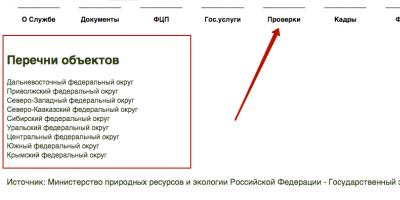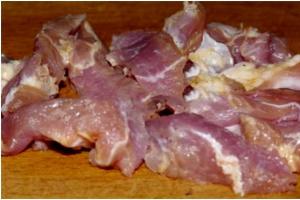How to sharpen scissors at home - this question often arises in everyday life. With frequent use, this tool may require sharpening even once every six months. Although it would seem that you can throw away the old ones and buy new ones, the modern market is flooded with low-quality Chinese products, and high-quality scissors are expensive.
Tools for professional cutting or hair cutting should be sharpened in a special workshop, but sometimes, when the scissors stop cutting, you need to fix them immediately and there is no time to go to a specialist. You can solve this problem at home in the following ways for a variety of scissors: stationery, tailor's, hair cutting, manicure, gardening and even construction. The simplest reason for the deterioration of the tool’s performance may be the presence of dirt on the blades, for example, after cutting off the tape, in this case it is enough to simply remove the deposit.
Lift
All kinds of scissors, for example, for paper, when they are in order, should cut the fabric, and the cutter's tool should cope with even the thinnest, for example, silk or chiffon, and not only the entire surface, but also the ends. If the blades individually seem sharp, but in fact do not cut the material, but chew it, then the reason may lie in the fact that the fastening of the blades has become loose. When the distance between the cutting surfaces becomes larger, the thin material is not cut, but is clamped. So before you start sharpening, you should try tightening the fastening and then try cutting the fabric again. It may turn out that this is where the problem ends.
The axis of the scissor wings is either a screw screwed into one of the halves, or a bolt with a nut, or a rivet. In the first and second cases, you should use a screwdriver (in the second option, pliers can also help, depending on the shape of the fastener) to tighten the fastening more tightly, having first opened the tool; if this is not done, then after tightening too hard, there is a risk of not being able to open the scissors in general, or the knives will move very slowly. In any case, you need to tighten it carefully and smoothly. It is permissible to turn the screw by a maximum of 0.5 mm, then you should check how the blades close, otherwise you can jam the tool so that it can no longer be repaired.
In the case of scissors with permanent fasteners, the situation is more complicated. The retainer consists of a rivet, a cap, on one side, and a small limiter, a plug made of soldered metal or plastic, on the other side. The tool should be opened, placed with the head down on an anvil or other strong flat metal object and secured. Then, using a hammer, you need to slightly flatten the latch stop. After checking the cutting ability, repeat the operation if necessary.
If the movement of the scissors turns out to be difficult, they should be lubricated. A thin lubricant is suitable for this purpose. sewing machines or any oil. You just need to drop a little on the axle and the blades will move easier.
High-quality sharpening
If tightening does not help and the tool still does not cut well, it needs to be sharpened. Perfect sharpening can be obtained on electric grinder, which you can not only purchase, but also assemble and master yourself, but you won’t have to start with scissors. It can even upgrade the tool used to cut electrical wires to such a state that it will cut the finest matter even with its very tips. Before you start sharpening, it is better to unwind the collapsible scissors, since it is more convenient to sharpen the knives separately, and the working surfaces must be prepared by cleaning them from dirt with a cotton pad with an alcohol-containing liquid. For your safety, you should wear leather gloves for rough work.
The angle of inclination of the cutting edges of scissors varies depending on their purpose. For most it is 60-75 degrees, and for stationery ones it is about 90 degrees. It is necessary to sharpen the blade, holding it by the ring, evenly along the entire length of the edge, strictly maintaining the appropriate angle. Sharpen the other side, the inner one, like regular knife, is strictly prohibited, otherwise the gap between the halves will only increase and the tool will stop cutting altogether. Each knife should be moved along the disk slowly towards you, from the axis to the tips, or in the opposite direction, the main thing is not to move back and forth and not to tear the edge from the disk. It is better to sharpen the blades of scissors that do not unwind from the axis, so as not to accidentally damage the second sash.
The procedure must be repeated several times, from time to time removing emerging burrs by lightly running the plane of the cutting edge along the disk. Usually no more than 20 approaches are required. After 30-60 minutes, depending on the effort applied to the knives and the quality of the sharpening wheel, you can get a perfectly sharpened tool. Anyone who has not sharpened scissors in this way before will find it difficult at first to determine whether the blade has already sharpened enough. To help yourself with this, you can paint the inclined cutting edge with a felt-tip pen before sharpening. When traces of paint completely disappear during the sharpening process, it can be considered complete.
Sharpening must be done by a person with a steady hand, capable of firmly fixing the direction. Even the slightest deviation in the angle of inclination will lead to the appearance of irregularities; some areas of the blades will no longer function correctly and because of this, the material will be cut unevenly, wrinkled and torn, or the cutting edges will quickly become dull. If you have old scissors you don't need, practice on them first to get a feel for how to sharpen correctly. Upon completion of sharpening the tool, both halves of the scissors need to be twisted again and checked how they move, cut a piece of material that matches the profile of this tool. If the resulting degree of spiciness is not satisfactory, you will have to repeat all the steps again.
If a special sharpening apparatus is not available, you can imitate it by using a file or a whetstone, the same one used to sharpen knives and other cutting tools. The stone usually has one side fine-grained and the other rougher. Severely dull scissors must first be processed on a rough surface to obtain small oblique teeth on the edges, thanks to which their wings will not slide over the material and will cut perfectly. After rough processing, the blades need to be brought down on the fine-grained side. You can also use only a medium-grained stone. The sharpener must first be prepared by covering the desired this moment side with a special oil for sharpening, if there is none, any will do, and in as a last resort even water. You will need to make the same movements, but you will also have to hold the sharpener in your other hand or somehow secure it to a suitable surface.
You can also use a universal sharpener for knives and scissors. To achieve the goal with this device, 5-7 movements may be enough. But there is only one angle of inclination of the cutting edge. If it does not match the one on your instrument, effective sharpening will not work. You can also use sandpaper as a sharpening stone.
Features of sharpening manicure, garden, metal and hair scissors
Nail scissors have a different cutting edge angle than most scissors; they are very small and require fine workmanship. Tools with straight blades can be sharpened on a sharpening machine with a diamond wheel if you have the proper skill. The speed of the circle must be set to the lowest. Move each blade from the tip to the axis, without applying strong pressure.
An electric tool removes too much metal at a time; without proper experience, there is a risk of permanently ruining the nail scissors, so to be on the safe side, you can instead use needle files, small needle files for minor works. First, a coarse-grained file is used, and then a fine one. You can also sharpen nail scissors on a small, fine-grained abrasive stone. It can be used to sharpen even tools with curved ends! To do this, you will need to give one of the edges of the sharpener a rounded shape with a radius of 0.4-0.5 cm.
To sharpen large curved branch scissors, you must first unwind them so that you can sharpen the entire length of the blades. To process the lower concave blade, you should use a sharpening wheel with a radius not exceeding 3.5 cm. To sharpen the tool for metal, they should also be unscrewed first, so that during sharpening, notches do not appear on the edges, which will prevent the smooth sliding of the metal along the blades, this is especially true for sheets thicker than 0.3 mm. Before reassembly, it is necessary to lubricate the fastening with lithol or other lubricant.
If scissors used for cutting hair are sharpened on a fine-grained stone, the blades will be very sharp, but the tool will no longer cut. This will happen because the hair is very thin and it will begin to slide along the blades. So, to adjust such tools, you need to take only a coarse-grained stone and not fine-tune it. Make movements from the tips to the axis.
Quick ways
When you need to cut something right away or you don’t even have a file or a whetstone at hand, simple traditional methods using improvised means. These techniques are suitable for minor sharpening, when the tool has not yet become completely dull. But we must not forget that similar methods are significantly inferior in quality and duration of effect, and after 2-3 times of using them, you should still sharpen them conscientiously.
- cutting sandpaper. This procedure will only take a couple of minutes. 150-200 sandpaper is preferable, although it is acceptable to use coarser-grained sandpaper, and fine-grained sandpaper will do in a pinch. Take a sheet of such paper and fold it in half with the rubbing side up so that the abrasive processes the edges of the blades when cutting. The sandpaper also removes burrs and steps from the edges. For a noticeable effect, you should cut about 10-20 strips, using the entire length of the edges. You can also cut the abrasive sandpaper into tissue based, steel wool or steel fiber kitchen sponge.
- Slicing aluminum foil. A sheet 20-25 cm long is taken, folded repeatedly along the length into an accordion or folded inward to form a thick strip. The more layers, the stronger the sharpening effect per cut. You need to cut the entire length of the edges. The more foil strips are cut, the better the sharpening will be.
- Cutting a glass jar or bottle. If the scissors are small, it is better to use a bottle neck with a uniform width. The container, held with one hand, must be placed in fully open scissors, held with the other, and the rings must be slowly brought together, applying a slight force, as if wanting to cut it, until it is completely pushed out. This action should be repeated until the edges of the scissors become smooth and have the required sharpness. It’s better to take a container that you don’t mind, as scratches may form on it.
- Threading with a sewing pin or large sewing needle. Everything is done the same way as cutting a jar. This method is best suited for small scissors, such as nail scissors.
After any sharpening, you need to wipe the doors with a dampened cloth to remove abrasive fragments.
How to properly use scissors to keep them sharp
If certain rules are followed, the tool may not require sharpening for years. Scissors used for cutting fabric should be used only for this purpose and should not be used to cut, say, fish fins, cardboard or even paper. In sewing, it is not uncommon to have to cut zippers or metal threads. For these operations it is better to have other scissors.
Some scissors require regular disinfection, such as those used for cooking, trimming plants, or trimming nails. For these purposes, you should not boil them, this leads to rapid dulling and rusting; it is better to treat them with an antiseptic, which can be found in a pharmacy, or with another alcohol-containing liquid.
The axes of all scissors should be lubricated every six months to ensure smooth operation and avoid corrosion.
Scissors are widely used in everyday life and professional activities. And often their blade becomes dull at the most inopportune moment. This hairdressing tool sharpening training or household scissors will help you improve them yourself.
"Fast" sharpening
What if you need scissors right now? For example, you need to finish cutting a dress or finishing paper craft. In this case, you can sharpen the scissors quickly so that you can perform this procedure carefully later.
To quickly give the scissor blades the necessary sharpness, you will need a simple needle. It is inserted between the blades of the scissors and, as it were, cut, drawing the scissors along the needle with force.
It can also be replaced with a thin object made of glass or iron. For example, a bottle neck or an iron rod.
This method of sharpening does not give a 100% long-term result. But it will strengthen the blades for a while.
Sharpening with emery
This method has the best effect. Moreover, learning to sharpen hairdressing tools and household scissors with its help is very simple.
The technology for carrying out the work is similar to that described above. Only instead of a needle or glass you will need a small piece of sandpaper. It is advisable to use coarse-grain paper. It is more convenient to process.
To make the scissors sharper, simply “cut” the sandpaper several times or rub the blades with pressure. However, only the outer edges of the scissors can be sharpened in this way. Inner part It is not recommended to use sandpaper. This will not only not sharpen them, but, on the contrary, will ruin them.
Sharpening with a file
There are attachments that are best suited for scissors, kitchen scissors, hairdressing scissors, and fabric scissors. And you won’t need training in sharpening manicure tools in Moscow, just a good file. For the procedure, you need to hold it tightly in your hand and run the blade of open scissors over it several times. Remember: the edge is sharpened only from the outside.
To prevent the hand with the file from slipping, you can find an elbow rest. It will be more convenient to work this way.
It will take some time to keep the scissors sharp. You can carefully check the sharpness of the blade with your finger or cut paper, checking how easily the scissors move.
Professional sharpening of tools can be ordered at the Sharpening Center workshop: Moscow, st. Verkhnyaya Radishchevskaya, house 11, building 4..
Nippers, tweezers, and scissors are among those tools in the manicure set, without which it is difficult to imagine performing a perfect trimmed manicure or pedicure at home. The blades of each tool must be sharp, smooth, without gaps in order to efficiently and safely remove the keratinized layer of the cuticle and give the free edge of the nail plate the desired shape. Even professional manicure tools from well-known brands after a while begin to tear off pieces instead of cutting the nails/cuticles evenly. And cutting tools from regular manicure/pedicure kits must be sharpened immediately after purchase.
There are three options to solve this problem.
Firstly, you can use the services of an individual sharpener who comes to the client’s home and polishes the cutting parts of nippers, tweezers and scissors manually. As a rule, the master works with a diamond monolayer (with a continuous diamond layer) whetstone.
Secondly, you can contact a workshop where a certified specialist will professionally sharpen manicure tools using a diamond wheel or in a special machine. In this case, the services will cost more, but the company provides a guarantee for its work (service life of at least 6-7 months, even with frequent use).
Third, you can turn to the “strong half” of your family for help and sharpening manicure tools at home will save your family budget. You will learn how to properly sharpen scissors and clippers for manicure/pedicure from the photo and video materials in this article.
♦ SHARPENING MANICURE CLIPPERS AT HOME
You can sharpen the blades of the wire cutters using a regular carbon steel file. Choose a file with a uniform grain and close-fitting, fine cuts. We recommend “experimenting” with old nail clippers, and if you have an expensive professional tool, then it is best to seek help from an experienced specialist.
- in the photo: “cheek”, “heel” and joint (hinge) of the pliers
❶
Backlash.
Open the pliers, grab one handle and swing from side to side. If there is play, then place the tool on the workbench, place the rod on the rivet of the hinge joint and tap with a hammer (not too hard), constantly checking the result; 
❷
Cleaning the swivel joint.
We open the nippers completely and, using a folded piece of sandpaper, clean the joint joints, first on one side of the tool, then on the other; 
❸
Sharpening the entire plane of the blade.
We place the open cutter with its cheek on the table and with smooth unidirectional movements of the file we grind the inner cutting edge; 
❹
Sharpening the corners of the blade.
We place the nippers on the cheek parallel to the line of the table edge and with smooth unidirectional movements of the file we grind the corner of the cutting edge; 
❺
Sharpening external cutting edges.
Now you need to close the nippers and place them on the table so that the connected cutting edges are at the top. We grind the outer cutting edges along the connection line using a reciprocating file motion; 
❻
Grinding the cheeks.
Alternately we grind the “cheeks” with unidirectional movements of the file; 
❼
Polishing and lubrication.
To finish the job, we'll go over the cutting edges of each blade with a polishing stone (8000 grit) to make them smooth and even. After this, you can lubricate the hinge joint with oil.
♦ SHARPENING NAIL SCISSORS AT HOME
For work, prepare two sharpening stones with an abrasiveness of 600 grit and 1500 grit.
- in the photo: joint, cutting edge, side and top plane of the scissors blade.
❶
Backlash.
Place the scissors with their sharp edges up and place the cue ball small size onto the rivet and hit the bit with a hammer. We eliminate the play gradually so as not to flatten the rivet too much with one blow; 
❷
Lubrication.
After eliminating the play, you can lubricate the joint of the tool on both sides so that the blades move freely and smoothly; 
❸
Blade sharpening with 600 grit stone.
We fix the open scissors on a stable surface and sharpen the cutting edge from the side of the upper plane of the blade, moving with a 600 grit sharpening stone in one direction (towards you). First we work with one blade, then move on to the second; 
❹
Blade polishing with 1500 grit stone.
Using a 1500 grit stone, we move in one direction (towards ourselves), eliminating scratches after sharpening and making the cutting edge of each blade smooth; 
❺
Blade tips.
After sharpening, one tip of the blade may move slightly away from the other. In order for the ends to fit tightly to each other, you need to bend one of them a little with pliers; 
❻
Examination.
Stretch a sheet of printer paper between your fingers and try cutting it down the middle with sharpened scissors. The cut should be smooth, without “chewed” edges.
♦ SHARPENING MANICURE TOOLS USING A GRINDING WHEEL
On sharpening machine You can sharpen your tool quickly and efficiently. Of course, you should have experience working with such equipment, since you can easily injure your hands while rotating the circle. It is best to sharpen the blades of manicure tools on a fine-grained diamond grinding wheel.
❶ We eliminate backlash at the very beginning of work. To do this, take a strong rod, place one end at the point where the blades join, and tap the other end with a hammer (not too hard), checking the working stroke of the tool from time to time;
❷ First sharpen the blades with inside, and then - from the outside (taking into account the cut angle). Set the minimum speed of the diamond wheel in the machine. We move the edge of the blade along a rotating circle in one direction (from beginning to end, the contact patch is no more than 0.3 mm);
❸ Turn off the machine, wipe the tool and, using a polishing block with an abrasiveness of 8000 grit, level the edges of the blade, ground in the machine.
♦ HOW TO CHECK THE QUALITY OF SHARPENING?
Scissors.
The cutting surface of the tool after sharpening should be smooth, and the edge of each blade should be even. Be sure to check the movement of the blades and make sure that there is absolutely no play, but the blades close/open smoothly, simultaneously, without unnecessary effort.
Test: Take a sheet of printer paper (or a piece of electrical tape) and stretch it between your fingers. Using sharpened scissor blades, cut the stretched fabric in the middle. If a clear cut remains on the paper without torn or chewed edges, then the tool is ready for use.
Nippers and cuticle tweezers.
Make sure that the edges of the blades on both sides are even and smooth, and that there is no gap between the cutting edges. Take the tool by the handles and move it up/down slightly. If you find any play in the joint of the pliers, be sure to ask the specialist to eliminate it, since during a trimming manicure you can injure the periungual ridges with sharp blades.
Test: Take a piece of thick plastic bag, pull it between your fingers and make a cut with sharpened wire cutters. The edges of the cut should be clear and even.
♦ VIDEO MATERIALS
Your recommendations will be very useful to all site visitors! Please leave comments on the article, share your secrets with each other home care for manicure tools.
If you want to post your photos and video materials on the topic on the site, please write a message to us by email: This e-mail address is being protected from spambots. You need JavaScript enabled to view it. To the main page
ALSO FIND OUT...
Scissors are an important and almost irreplaceable household appliance. There are two main types: stationery and manicure. The service life of the product depends on the quality of workmanship and the type of metal used. Almost any scissors require periodic sharpening. You can cope with the task of how to sharpen scissors at home using various methods.
Sharpening methods
 With constant use, office scissors need to be sharpened no more than once every 6 months. Do not forget that sharpening metal product involves removing a layer of material, thereby reducing its service life.
With constant use, office scissors need to be sharpened no more than once every 6 months. Do not forget that sharpening metal product involves removing a layer of material, thereby reducing its service life.
Due to the use of low-quality mild steel, scissors produced by little-known manufacturers get dull pretty quickly. The mechanism for fastening the two parts of the structure has relatively low strength and can quickly break under significant mechanical stress. More expensive and high-quality products can last a long time.
There is quite a large number of various methods of sharpening scissors. The most common are:
- Using a needle.
- Using sandpaper.
- Removing metal using a file.
- Application of a diamond wheel.
- Using a special device.
The features of the method used only partially affect the quality of sharpening. As a rule, when using a special device, the process is significantly simplified and accelerated. Sometimes to achieve the desired result you have to carry out the procedure several times.
Preparatory stage
You can sharpen scissors at home in the shortest possible time. In order to improve the quality of the result obtained and eliminate the possibility of complications of the process, attention should be paid to the preparatory stage:

If the connection between the two halves is loose, you can tighten the connecting mechanism using a screwdriver and pliers, as well as a hammer. As connecting element Can use either a screw or a rivet. When performing such work, the following points should be taken into account:
- The mechanism should be tightened carefully, as if the clamp is too strong, the scissors may become stuck and will have to be thrown away.
- It is recommended to turn the screw no more than 0.5 mm.
- In the case of a rivet, the scissors are placed on the anvil and fixed; with a few blows, the plug can be flattened.
- Some models have a kind of limiter that prevents the two halves from meeting. In order to reduce the gap, the limiter is filed down.
After eliminating the defects, you should check if sharpening is required. Very often the cutting edge is in good condition, but due to the large gap, the scissors cannot cut materials.
Needle sharpening method
 In most cases, it is necessary to sharpen the scissors if there are no special tools at hand. The way out of this situation is often to use a regular needle.
In most cases, it is necessary to sharpen the scissors if there are no special tools at hand. The way out of this situation is often to use a regular needle.
This method of sharpening a metal product involves performing the following work:
- Stretch the two halves as wide as possible.
- The needle is placed near the section.
- The two halves of the scissors are gradually brought together. Naturally the needle moves forward.
A similar procedure is recommended repeat 2-3 times. When making a needle, hard metal is usually used. Upon contact with the cutting edge, a layer of metal is removed from the surface being processed. Naturally, the needle is located under the right angle relative to the cutting edge.
Using Sandpaper
 You can also quickly sharpen scissors using sandpaper. To carry out the work, you only need paper with any size of abrasive. The sharpening process in this case is quite simple.
You can also quickly sharpen scissors using sandpaper. To carry out the work, you only need paper with any size of abrasive. The sharpening process in this case is quite simple.
A sheet of sandpaper should be folded in half. Abrasive surface must be outside.
The folded paper is placed between the two separated parts of the scissors, after which several cuts should be made.
This method is only suitable for cases where there is not enough time to fully sharpen the surface. After some time, the cutting part will become dull again.
Using a file
A file is a tool designed to remove metal from various surfaces. When you need to sharpen hairdressing scissors, the conventional method is not suitable. Sequencing:

When using a file, the surface must be sharpened only in one direction.
Application of diamond wheel
If professional instruments are not available, the processing can be carried out using a diamond wheel. This method is more suitable for processing small or fragile items. Its features include the following points:

Instead of a diamond wheel you can use diamond nefil. To sharpen nail scissors, you should use two types of diamond nefil: first, processing is carried out with a coarser grain, then with a fine-grained tool. By using abrasives with different grain sizes, you can achieve better results.
You can find just a huge number of different recommendations related to the processing of nail scissors. In order to significantly increase the service life of the product, you should pay attention to the recommendations below:

Thus, sharpening professional tools must be carried out by a professional. An example is thinning scissors, which at home when used ordinary tools don't sharpen.
A manicure set is an essential companion for every self-respecting woman. He can provide insurance in the most unforeseen situations. In this article we will look at options on how you can quickly and without much difficulty make nail scissors no less sharp than when you bought them.
When your favorite nail scissors lose their former qualities and become dull, it becomes inconvenient to use them. They no longer cut the nail as perfectly as before, and can even cause microtrauma, as if they were “chewing” the nail. In this case, you can either throw away the old scissors and buy new ones, or try to correct the situation yourself and sharpen them using improvised means.
What can be done
- Sandpaper works well for this. It is better to choose one that has a larger grain size. Having folded the sheet in half, you can begin to cut it, it is desirable that the blades touch the entire length of the abrasive. With each movement the scissors will become sharper. After finishing sharpening, you need to wipe this manicure tool with a damp cloth to remove microparticles remaining on it.
- Ordinary aluminum foil, which is sold everywhere, can also be used as an abrasive material. Having folded it in several layers, you can start cutting it into strips. If strong sharpening of the blades is required, then you need to make as many cuts as possible. After finishing work, you need to wipe the blades.
- A whetstone is perfect for this job. Its coarse-grained part is better suited for starting turning when the blades are still very dull. After this, it is better to continue working with a fine-grained surface to finish sanding the scissors. Before you start sanding, you need to disassemble the manicure tool to make it more convenient to work. To do this, simply unscrew the central screw and divide it into two halves. After this, you need to place one of the blades with the inner flat side (which is usually in contact with the other half of the scissors) on the whetstone. Next you need to choose correct angle, under which you need to sharpen the blade. A dozen repeated movements will be enough to complete the job. To ensure that the tool is sharp enough, you can mark the sharp parts of the blades with a felt-tip pen before starting sharpening. If after the procedure the marks are erased, it means that the scissors are sufficiently sharpened. The test can also be carried out on a piece of polyethylene; if they do not crumple it and cut it easily, then the cutting edges are sharp enough.
- You can use old unnecessary glass jar for sharpening. To do this, you need to hold the container with one hand and open and close the blades of the scissors with the other, pressing them tightly against the walls of the jar. Glass will make the blades sharper. After finishing sharpening, you must remember to wipe them with a damp cloth to remove burrs.
- Use a pin or needle according to the same principle as described above. By moving the metal base of the pin between the interlocking blades, you can add sharpness with just a few strokes. In this case, you need to watch the blades so as not to get hurt.
- Having a diamond wheel will make the work much easier. Moreover, the effect of its use lasts for a long time. When working, you should take into account the shape of the tool, since nail scissors often have semicircular blades, which requires attention to their processing. Without having the skills to work with objects on a machine, it is better not to start it, as you can damage the scissors by removing too much metal. For rounded blades, an edge of a sharpening stone with a radius close to the radius of curvature of the blade is ideal.
Many people do not hesitate to throw away scissors that have just become dull, but otherwise work fine. But they can be sharpened quite simply without resorting to the services of special workshops. Thus, having learned how to independently return the scissors to working condition, you can use them for a long time without buying new ones. At the same time, following the advice outlined in the article, you can return your favorite nail scissors to working condition, which you are used to and which you do not want to change.
Video: how to sharpen nail scissors at home








